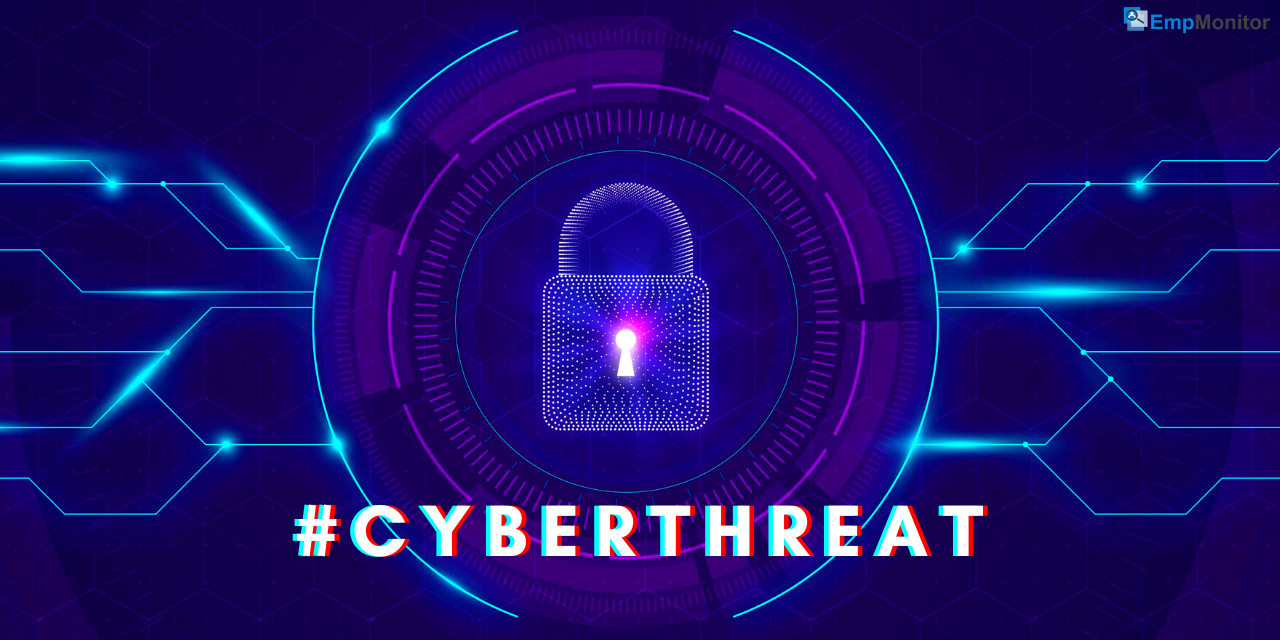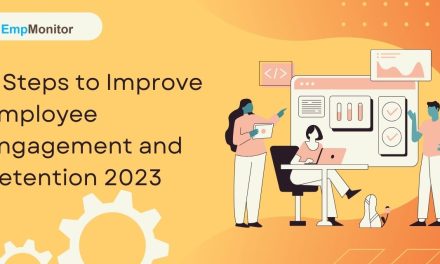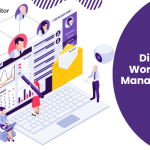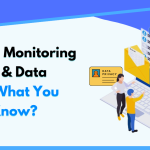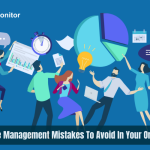Security issues might cause significant and long-term financial and reputation damage. No company should take these risks lightly. It only takes one flaw or slips to derail everything a company has worked so hard to build from the ground up. And that is why threat detection and prevention are so crucial.
Enterprises can gain a major advantage by being aware of these security threats. In addition, understanding how cybercriminals operate and their motivations will be critical in formulating a strong response.
This article will go through the various security threats and risks that your firm should know to plan for comprehensive cybersecurity defense.
What Is Threat Detection and Prevention?
The ability of a company to monitor activity in its IT environment and identify true security risks is known as threat detection. Threat prevention is the ability to avoid particular threats from entering the environment or causing harm. To prevent dangers, you must first be able to detect them in real-time.
Security organizations use advanced threat detection software to detect and prevent threats. For example, the security information and event management (SIEM) system was the key system used in the former security operations center (SOC) to gather threat data and identify threats. eXtended Detection and Reaction (XDR) is becoming more popular among businesses as it may improve the detection of unknown risks, automate research, and enable fast response to attacks.
Several sophisticated threat detection software that uses artificial intelligence (AI) assist in detecting threats, even if they do not match a recognized malware or attack signature. NGAV, user behavior standards, and ransomware are examples.
What Are The Various Threats To an Organization?
Advanced Persistent Threats (APT):
When committing Advanced Persistent Threats (APTs), cybercriminals prefer to take their time. They penetrate a computer network invisibly and, in concert, locate entry and exit points that will allow them to remain undetected.
They explore, install dangerous specialized viruses, and steal vital data and sensitive information while inside a company.
To compromise a company’s cybersecurity, they use cutting-edge technologies such as malware and computer penetration strategies. These cybercriminals are tenacious, opting for stealth methods to get access to a company and cause havoc.
An Advanced Persistent Threat usually progresses through five stages to maximize its damage:
Infiltration of Access:
APT attackers use phishing, trojan horses, and malware to access the system. They may also utilize human vulnerability, necessitating internal cybersecurity training to mitigate these dangers. To avoid access infiltration, you can use insider threat detection tools like EmpMonitor. It will not only detect any insider threats but also will empower you to tackle them.
Grip Strengthening:
The ability of an Advanced Persistent Threat to gain a foothold within a firm is its strength. They must devise a method for entering and exiting the system without being detected. Cybercriminals employ digital backdoors and tunnels to do this.
Invasion of the System:
APT attackers will continue to compromise the system by gaining administrator access and breaking passwords left and right once they have as much freedom as possible. They can retrieve their desired data with minimal pushback if they have this form of access.
Lateral Activity:
Cybercriminals are currently playing in the business world. They’ll look into other system compartments to gain access to additional sensitive databases and servers in the area. They collect data using malware and then transmit it out of the network using backdoors. This is where the breach begins. The best way to detect and prevent this is to use threat detection software for better defense.
Deep Manipulation:
The APT attackers have complete control over the company at this phase, erasing all signs of their cyber footprint and constructing a reliable backdoor for future use. This extends the life of the cyber attack within the system.
DDoS (Distributed Denial of Service):
When hackers use Distributed Denial of Service (DDOS), their primary goal is to bring down a website.
In a nutshell, they swarm a target network with bogus requests to overload the system and cause it to fail. Since the website will be unavailable, legitimate users or customers will be unable to access it. Because of these unjustifiable interruptions, DDoS could result in significant productivity losses.
Because the incoming bombardment does not come from a single source, resisting a Distributed Denial-of-Service attack is challenging. For example, consider a restaurant where a rowdy crowd gathers in front of the door to create a spectacle. The confirmed guests will be unable to enter, disrupting the restaurant’s daily operations. Likewise, credit card and digital wallet payment gateways are high-profile DDoS targets.
The first DDoS attack happened on September 6, 1998, when Internet Service Provider Panix became unreachable to its clients due to a flood attack. Another notable occurrence occurred in 1997 when Khan C. Smith demonstrated a DDoS attack that disabled online access to the Las Vegas strip for about an hour.
Ransomware:
Ransomware is a form of digital extortion, a type of crypto virology virus that hackers execute and encrypt to perfection after gaining access to your network. They steal critical business data or sensitive customer personal information, then threaten to expose the material unless the victim company pays a ransom.
Over time, ransomware has proven to be a successful cybercrime method for blackmailing businesses. Ransomware attacks on Atlanta, Georgia, Baltimore, Maryland, and other high-profile companies are notable examples.
Attackers use the critical information they find within a compromised network to weaponize it. For example, to entice employees to join the company, standard approaches include offering an innocent attachment or link.
Joseph Popp created the AIDS Trojan in 1989, which was the first known ransomware attack. This malware encrypted and masked the sophisticated disk data, significantly limiting access to the data, which was required to pay the blackmailer to regain access to the contents.
HIV/AIDS patients To obtain the repair tool and decryption key, Trojan had to pay PC Cyborg Corporation US$189. However, Popp was spared from the trial because he was mentally ill. Instead, he offered to donate his malware’s profits to AIDS research.
Phishing:
Phishing is exactly what it implies. Hackers cast a line hoping that you will bite, and when you do, they capture personal information such as passwords, credit card numbers, and other sensitive data. Phishing efforts are usually disguised as legitimate emails that pressure you to respond.
The term “phishing” comes from “fishing,” which refers to how hackers lure their victims in as if they were unwitting fish accepting a fisherman’s bait. It was initially used in 1995, by Koceilah Rekouche, with the cracking tools AOHell.
Worms:
Worms are malware that reproduces themselves, usually after contact with a computer company. They use network flaws to multiply indefinitely and grow their presence and impact.
The word “worm” comes from the Creeper Worm, the first virus discovered in the early 1970s. The Creeper Worm, written by Bob Thomas of BBN Technologies, infiltrated the ARPANET and replicated itself within the system, teasing users with the message “I’m the creeper, catch me if you can!”
Botnet:
A botnet is a combination of “robot” and “network.” It is the aggregate name for private computers infected with malware, exposing them to remote access by hackers without the knowledge of the enterprise.
Distributing spam, launching DDoS attacks, and stealing data require this level of precise management and understanding of target networks. Botnets are force multipliers used by fraudsters to disrupt target firms’ complex systems.
Botnet architecture has vastly improved to avoid detection. Its applications create clients that connect to existing servers under disguise. The botnets can then be controlled remotely via peer-to-peer networks by cybercriminals.
Cryptojacking:
Cryptocurrency is all the rage these days, and it relies on the mining approach to generate additional revenue. Cybercriminals have begun to infect and hijack other slave workstations that will perform bitcoin mining using phishing methods.
Because targets are unaware that their resources are being used to generate bitcoin, cryptojacking may cause slower PCs.
Security Threats’ Typical Victims:
Cybercriminals use deceptive methods to harm organizations for various motives, including espionage, financial gain, and commercial destruction. High-value targets generally yield big financial incentives for digital attackers, which is one of the main reasons they choose significant targets:
Countries may experience instability and turmoil due to sensitive material from their authorities.
- Multinational corporations – have cutting-edge or market-leading intellectual property.
- Government agencies and critical infrastructure.
- Identity thieves frequently target databases containing Personally Identifiable Information (PII).
Threat Detection Trends: How Can You Protect Your Company From Threats?
Continuous Monitoring:
Immediate and emerging threats necessitate constant vigilance, not just a once-in-a-while check-in every few months. In addition, attackers can strike at any time, necessitating constant surveillance of your potential attack surface.
When your application environment grows and evolves, continuous monitoring becomes even more important. It will grow more difficult to keep track of risk as more apps are released. You may continuously expose and discover dangerous areas that unscrupulous parties try to exploit using continuous monitoring.
Employee monitoring software such as EmpMonitor comes in handy to track and monitor your employees’ actions. It is one of the best insider threat detection tools to use. Be it in a workplace or for remote employees.
Analytics on Cybersecurity:
Following continuous monitoring, work to improve your cybersecurity posture over time. For example, future improvements may be obtained through analytics that examine how your company performs compared to competitors, supply chain problems, user patterns, and other factors. Based on the analysis, improvements could be made, resulting in higher-excellent ratings. A higher score indicates a safer workplace.
Make Security Training Available:
If an employee clicks on a malicious link or installs fake software, even the most sophisticated and expensive data protection procedures may be compromised. As a result, businesses must appropriately train their employees on common cyber threats and how to respond. Likewise, your employees should be aware of your cyber security policies and how to report suspicious activity.
Now is the ideal time to secure your future with threat detection software. If you wait until you’re older to get life insurance, your monthly premiums may increase. Looking at rates now may allow you to lock in a lower rate for the balance of your policy, saving you money in the long run.
Establish Strict Password Policies:
Password management should regularly keep attackers out of your password-protected data. Please set a password policy that requires employees to change their passwords regularly, avoid using the same password for several accounts, and use unusual characters. Long paragraphs are growing increasingly popular, and they could be a great fit for your company.
Get Vulnerability Evaluations:
A vulnerability assessment is the best way to assess your company’s data exposures. Vulnerability assessments can help you find access points into your system by simulating attacks and testing them. Following these tests, security specialists may compile their findings and recommend enhancing network and data security.
Prioritization of Risks:
Not all threats are created equal, and certain vulnerabilities are more dangerous than others. When it comes to third-party supply chain risk, this is especially true. For example, a vendor with private data, such as company payroll data, poses a greater risk than one who does not have access to personally identifiable information.
Security ratings can assist you in prioritizing your suppliers so that you can focus your resources on the ones who need them the most. In addition, cross-referencing a vendor’s security rating with other critical data points–for example, their closeness to sensitive data or the amount of work they provide for your organization–can help you figure out which suppliers are the most concerning.
Check Out Our Latest Posts:
7 Team Building Office Games Must Try At Workplace
Toxic Productivity: How To Deal With It?
How Web Filtering Affects Productivity In Your Workforce?
To Sum It Up:
“Knowledge is power,” as we’ve all heard, but in the case of threat detection, knowledge is both power and defense. The more you know about your network, third-party providers, and other elements, the better your chances of defending yourself against cybersecurity assaults and vulnerabilities are.

